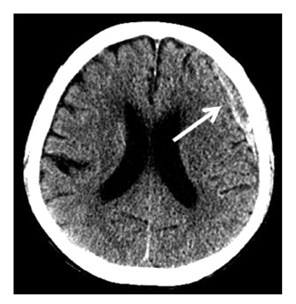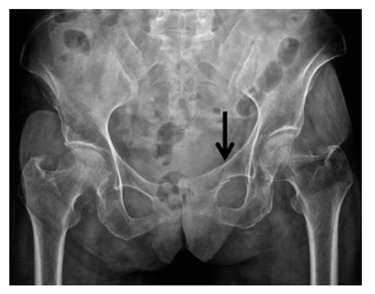J Korean Med Assoc.
2015 Feb;58(2):123-130. 10.5124/jkma.2015.58.2.123.
Prevention of fall in the hospital
- Affiliations
-
- 1Department of Medicine, Samsung Medical Center, Sungkyunkwan University School of Medicine, Seoul, Korea. parksmc@gmail.com
- 2Department of Quality Innovation, Samsung Medical Center, Seoul, Korea.
- KMID: 1958374
- DOI: http://doi.org/10.5124/jkma.2015.58.2.123
Abstract
- Falls in the hospital are one of the most important patient safety issues. Falls can cause various kinds of injury as well as death, especially for fragile patients and elderly persons. Although patient falls are frequent, most of them are preventable. All patients should be carefully evaluated for risk factors for falling, and individualized care is necessary for fall-prone patients. There are numerous environmental issues regarding fall risk. Prevention of falls is not a prominent area of knowledge in many nursing departments. All medical personnel, including physicians and surgeons, need to know the basic facts and strategies regarding the prevention of falls in the hospital and contribute in their role to patient safety. In this review, current strategies for the prevention of falls in the hospital will be summarized.
Keyword
MeSH Terms
Figure
Cited by 2 articles
-
Approaches to improve patient safety in healthcare organizations
Sang-Il Lee
J Korean Med Assoc. 2015;58(2):90-92. doi: 10.5124/jkma.2015.58.2.90.Effects of Fall Prevention Education Program on Attitudes, Prevention Behaviors, and Satisfaction among Elderly Inpatients
Young Ok Kang, Rhayun Song
Korean J Adult Nurs. 2018;30(1):49-59. doi: 10.7475/KJAN.2018.30.1.49.
Reference
-
1. Tinetti ME, Speechley M, Ginter SF. Risk factors for falls among elderly persons living in the community. N Engl J Med. 1988; 319:1701–1707.
Article2. Lim JY, Park WB, Oh MK, Kang EK, Paik NJ. Falls in a proportional region population in Korean elderly: incidence, consequences, and risk factors. J Korean Geriatr Soc. 2010; 14:8–17.
Article3. Stevens JA, Mack KA, Paulozzi LJ, Ballesteros MF. Self-reported falls and fall-related injuries among persons aged>or=65 years: United States, 2006. J Safety Res. 2008; 39:345–349.
Article4. Korea Centers for Disease Control and Prevention. Current characteristics of injury among older adults by injury mechanism [Internet]. Cheongwon: Korea Centers for Disease Control and Prevention;2012. cited 2014 Dec 10. Available from: http://www.cdc.go.kr/CDC/info/CdcKrInfo0301.jsp?menuIds=HOME001-MNU1132-MNU1138-MNU0037-MNU1380&cid=12356.5. Morse JM. Preventing patient falls. . Thousand Oaks: SAGE Publications;1997.6. Tideiksaar R. Fall in older people: prevention and management. Baltimore: Health Professions Press;2002.7. Porthouse J, Birks YF, Torgerson DJ, Cockayne S, Puffer S, Watt I. Risk factors for fracture in a UK population: a prospective cohort study. QJM. 2004; 97:569–574.
Article8. Colon-Emeric CS, Pieper CF, Artz MB. Can historical and functional risk factors be used to predict fractures in community-dwelling older adults? Development and validation of a clinical tool. Osteoporos Int. 2002; 13:955–961.
Article9. Hughes RG. Patient safety and quality: an evidence-based handbook for nurses [Internet]. Rockville: Agency for Healthcare Research and Quality;2008. cited 2015 Jan 22. Available from: http://www.ahrq.gov/professionals/clinicians-providers/resources/nursing/resources/nurseshdbk/index.html.10. Oliver D, Daly F, Martin FC, McMurdo ME. Risk factors and risk assessment tools for falls in hospital in-patients: a systematic review. Age Ageing. 2004; 33:122–130.
Article11. Morse JM, Black C, Oberle K, Donahue P. A prospective study to identify the fall-prone patient. Soc Sci Med. 1989; 28:81–86.
Article12. Oliver D, Britton M, Seed P, Martin FC, Hopper AH. Development and evaluation of evidence based risk assessment tool (STRATIFY) to predict which elderly inpatients will fall: case-control and cohort studies. BMJ. 1997; 315:1049–1053.
Article13. Hill-Rodriguez D, Messmer PR, Williams PD, Zeller RA, Williams AR, Wood M, Henry M. The Humpty Dumpty Falls Scale: a case-control study. J Spec Pediatr Nurs. 2009; 14:22–32.
Article14. McWilliams JR. An evidence-based pediatric fall risk assessment tool for home health practice. Home Healthc Nurse. 2011; 29:98–105.
Article15. Institute for Healthcare Improvement. Transforming care at the bedside how-to guide: reducing patient injuries from falls [Internet]. Cambridge: Institute for Healthcare Improvement;cited 2015 Janc 29. http://www.ihi.org/resources/Pages/Tools/TCABHowToGuideReducingPatientInjuriesfromFalls.aspx.16. Spoelstra SL, Given BA, Given CW. Fall prevention in hospitals: an integrative review. Clin Nurs Res. 2012; 21:92–112.17. Joint Commission International. Joint Commission International accereditation standards for hospitals. 5th ed. Oakbrook Terrace: Joint Commission International Press;2013.
- Full Text Links
- Actions
-
Cited
- CITED
-
- Close
- Share
- Similar articles
-
- The Literature Review for Fall in the Elderly
- Factors Associated with Nurses' Activities for Hospital Fall Prevention
- A Structural Equation Model of Fall Prevention Behavior among Community-dwelling Older Adults with Osteoarthritis
- A Study on Self-leadership, Fall Attitude, and Nurses' Behavior to Prevent Patient Falls
- Structural Analysis of Variables related to Fall Prevention Behavior of Registered Nurses in Small-to-Medium Sized Hospitals



